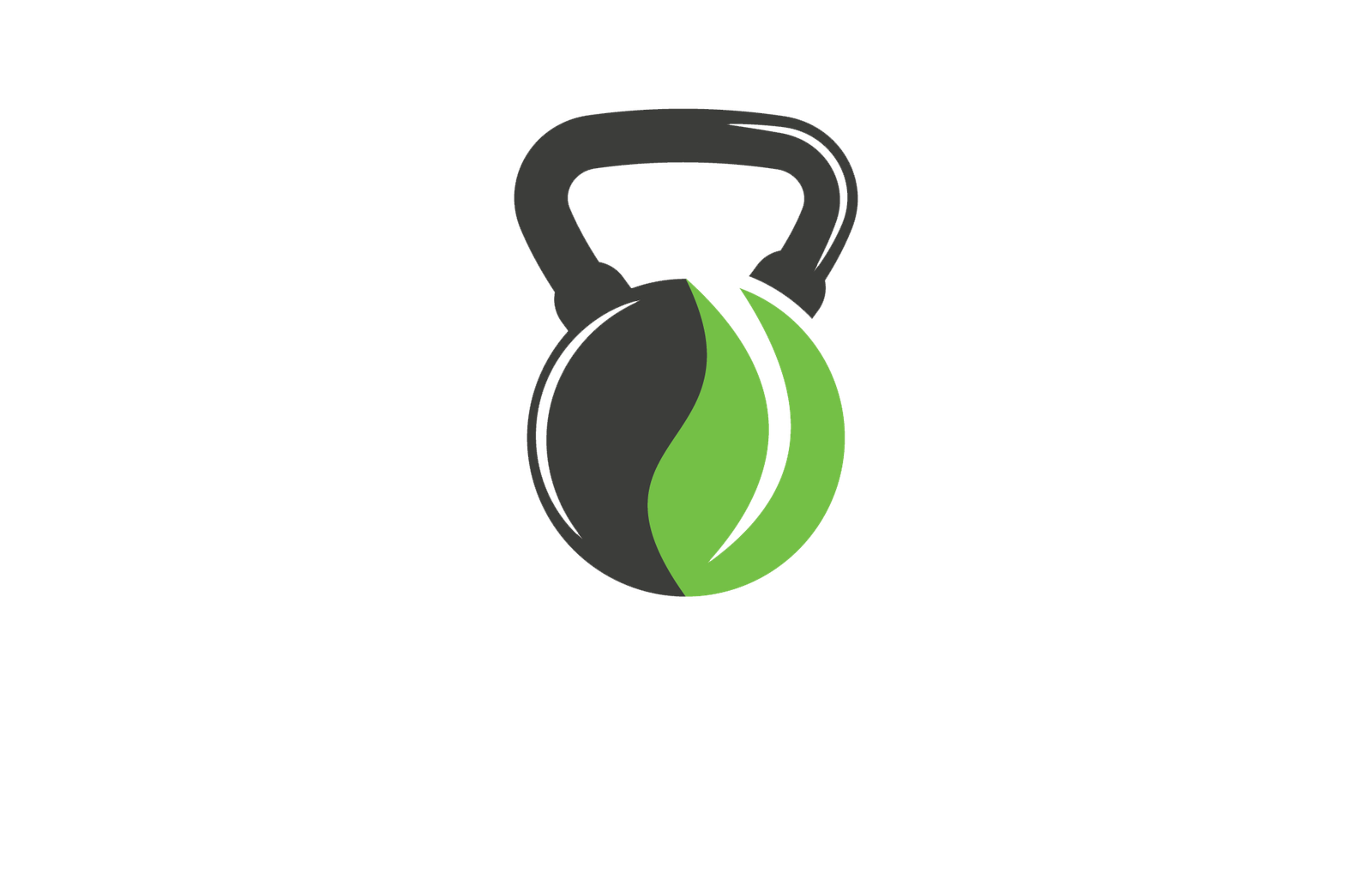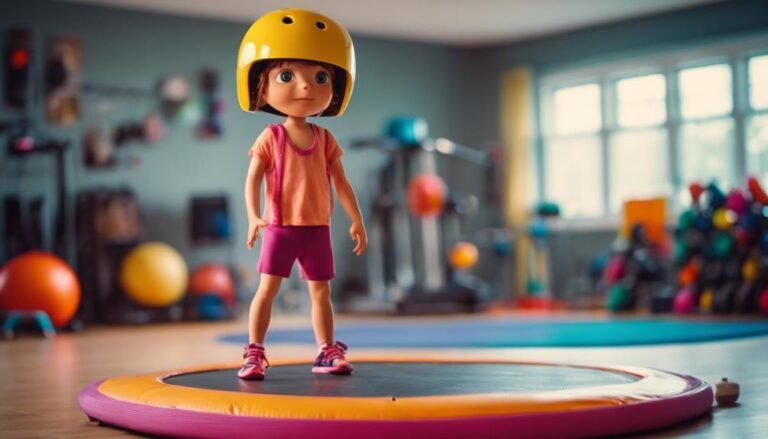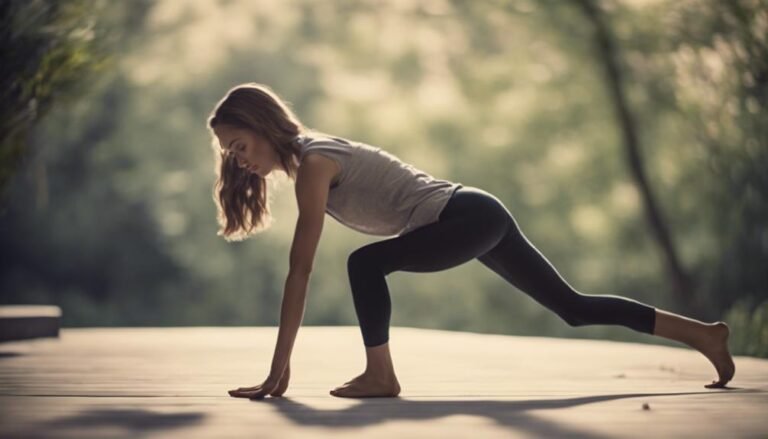Don't miss our holiday offer - 20% OFF!

Hydration Tips for Safe and Effective Workouts
Hydrate correctly and unlock your full potential with these expert tips, or risk dehydration and diminished workout performance.
As we prepare for our workouts, we often focus on gear, nutrition, and training plans, but neglect the most fundamental component of a successful fitness journey: proper hydration. Even mild dehydration can lead to fatigue, headaches, and decreased productivity, impairing our performance. To optimize our workouts, we need to prioritize hydration. By calculating our sweat rate, staying hydrated before, during, and after exercise, and replenishing lost electrolytes, we can prevent dehydration and tap our full potential. By adopting these habits, we'll be better equipped to crush our fitness goals – and there's more to explore on this path to peak performance.
Key Takeaways
- Drink 17-20 ounces of water 2-3 hours before exercise to allow for proper absorption and optimize athletic performance.
- Consume 7-10 ounces of water or sports drink every 10-15 minutes during exercise to replenish lost fluids and electrolytes.
- Replenish lost fluids and electrolytes within 30-60 minutes after exercise with a recovery drink containing carbohydrates, protein, and electrolytes.
- Verify hydration by monitoring urine output and color, aiming for a pale yellow color, and adjust fluid intake accordingly.
- Prioritize electrolyte balance by consuming the right type and amount of electrolytes, especially during high-intensity exercise, to maximize performance and reduce injury risk.
The Importance of Water Intake
We need water to survive, and our bodies rely on adequate hydration to function properly, making water intake a vital component of our daily lives. As we go about our daily routines, it's easy to overlook the importance of staying hydrated. However, even mild dehydration can lead to fatigue, headaches, and decreased productivity. That's why it's imperative to prioritize water intake throughout the day.
When it comes to water quality, it's vital to drink water from a trusted source. Tap water, filtered water, or bottled water from a reputable brand are all good options. Avoid drinking water from unknown sources, as it may contain contaminants that can harm our health.
Incorporating water into our daily routines is easier than we think. We can start by keeping a refillable water bottle with us at all times, setting reminders to drink water at specific intervals, or infusing our water with fruits or herbs for added flavor. By making hydration a habit, we can improve our overall health and well-being, and perform at our best in all aspects of life.
Calculating Your Sweat Rate
To accurately estimate our individual hydration needs, let's calculate our sweat rate, a key metric that reveals how much fluid we lose during exercise or physical activity. This metric is essential in understanding our unique hydration requirements, especially for athletes or individuals who engage in high-intensity workouts.
Sweat profiling is a valuable tool in determining our sweat rate, which can vary greatly due to athlete variability. Factors such as climate, exercise intensity, and individual characteristics all impact our sweat rate. To calculate our sweat rate, we can follow these simple steps:
- Weigh yourself naked before exercise
- Perform your typical workout while wearing a heart rate monitor
- Weigh yourself naked again after exercise
- Record the difference in weight and calculate your sweat rate in milliliters per hour
Pre-Workout Hydration Strategies
Proper pre-workout hydration sets the stage for peak performance, and our strategy should be tailored to individual sweat rates and exercise demands. We need to drink the right amount of water at the right time to optimize our workout. A good rule of thumb is to drink 17-20 ounces of water 2-3 hours before exercise to allow for proper absorption. This is our Hydration Window, and it's vital for preventing dehydration and optimizing athletic performance.
For morning workouts, we recommend a Morning Boost – a small amount of water or sports drink consumed 15-30 minutes before exercise. This helps top off our fluid levels and get our bodies ready for physical activity. Additionally, we should aim to drink 8-10 ounces of water 10-15 minutes before exercise to confirm we're well-hydrated and ready to perform at our best. By following these pre-workout hydration strategies, we can set ourselves up for success and achieve peak performance.
Intra-Workout Hydration Tips
As we move into the intra-workout phase, it's essential that we prioritize hydration to optimize our performance. We need to drink water or a sports drink during exercise to replenish lost fluids and electrolytes. By doing so, we can maintain our energy levels and prevent dehydration, which can hinder our progress and overall well-being.
Hydrate During Exercise
When we're in the midst of a workout, it's essential that we drink water or a sports drink to replenish lost electrolytes and prevent dehydration. This is critical for exercise safety, as dehydration can lead to serious health issues. We've all been there – feeling fatigued, dizzy, and struggling to catch our breath. By hydrating during exercise, we can maintain our energy levels and perform at our best.
Here are some intra-workout hydration tips to keep in mind:
** Drink 7-10 ounces of water or sports drink every 10-15 minutes
**If exercising for over an hour, consider a sports drink to replenish electrolytes
- Make sure to drink before feeling thirsty, as thirst is a sign of dehydration
- Workout with a partner to hold each other accountable for hydration breaks
Monitor Fluid Intake
We need to keep tabs on our fluid intake during exercise to guarantee we're staying hydrated and performing at our best. Monitoring our fluid intake is vital, especially during intense or prolonged workouts. We can do this by tracking our fluid intake before, during, and after exercise. One effective way is to log our water intake, making a note of how much we drink and when. This water logging helps us identify patterns and make adjustments as needed. For instance, if we notice we're not drinking enough during exercise, we can set reminders to drink at regular intervals. Additionally, we can monitor our urine output and color to confirm we're staying hydrated. If our urine is dark yellow or we're not urinating frequently enough, it may be a sign that we need to drink more. By keeping track of our fluid intake, we can optimize our hydration levels and perform at our best.
Post-Workout Rehydration Methods
After a strenuous workout, replenishing lost fluids and electrolytes within 30-60 minutes is essential to kickstart the recovery process and prevent dehydration. It's vital to restore our bodies to their peak state. So, what are the best post-workout rehydration methods?
Replenishing lost fluids and electrolytes is essential to restore our bodies to their peak state. Proper rehydration is vital to restore our bodies to their peak state. So, what are the best post-workout rehydration methods?
- Recovery Drinks: Consuming a recovery drink that contains carbohydrates, protein, and electrolytes within 30-60 minutes after exercise helps to replenish energy stores and support muscle recovery.
- Water and Electrolyte Intake: Drinking water with added electrolyte supplements or consuming electrolyte-rich beverages like coconut water or sports drinks helps to replenish lost electrolytes.
- Balanced Snacking: Eating a balanced snack that includes carbohydrates and protein within 30-60 minutes after exercise supports muscle recovery and replenishes energy stores.
- Adequate Sleep: Prioritizing adequate sleep after a workout allows our bodies to fully recover and adapt to the physical demands of exercise.
Hydration for High-Intensity Exercise
When we engage in high-intensity exercise, our bodies lose more than just water – we also lose essential electrolytes. As we prepare for our next intense workout, it's essential to remember that proper hydration is vital to our performance and recovery. Let's explore the importance of timing our fluid intake and maintaining electrolyte balance to optimize our results.
Fluid Intake Timing
Optimizing fluid intake timing is essential for high-intensity exercise, as even mild dehydration can substantially impair our athletic performance. As athletes, we need to verify we're fueling our bodies at the right times to maximize our workout potential.
To do this, we can utilize specific timing strategies to optimize our fluid intake.
- Fluid windows: Identify specific time windows to drink fluids, such as 17-20 ounces 2-3 hours before exercise, and 7-10 ounces 10-15 minutes before exercise.
- Timing strategies can include drinking 3-5 ounces every 10-15 minutes during exercise, and 16-24 ounces for every pound of body weight lost during exercise.
- Additionally, we can consume fluids with carbohydrates and electrolytes to enhance absorption and utilization.
- It's also vital to monitor our urine output and color to confirm we're staying properly hydrated.
Electrolyte Balance Matters
We recognize that electrolyte balance plays a vital role in high-intensity exercise, as it directly impacts our performance and overall well-being. When we engage in intense physical activity, we lose essential electrolytes like sodium, potassium, and magnesium through sweat. If we don't replenish them, it can lead to muscle cramps, fatigue, and decreased performance.
To maintain peak electrolyte balance, we recommend incorporating electrolyte supplements into our workout routine. These supplements help replace lost electrolytes and guarantee our bodies function at their best. However, it's essential to choose the right type and amount of electrolytes for our specific needs. We suggest consulting with a healthcare professional or registered dietitian to determine the best electrolyte supplement for us.
Additionally, electrolyte testing can help us identify any imbalances and make informed decisions about our supplementation. By prioritizing electrolyte balance, we can maximize our performance, reduce the risk of injury, and take our workouts to the next level. By taking these proactive steps, we can guarantee we're performing at our best and achieving our fitness goals.
Avoiding Dehydration Symptoms
Recognizing dehydration symptoms is essential, as they can quickly escalate from mild to severe if left untreated, and our bodies often give us subtle warnings before dehydration sets in. As we push ourselves to achieve our fitness goals, it's vital we're aware of the signs that indicate our bodies need more water.
We've all experienced it: the sluggishness, the dizziness, and the sudden fatigue that seems to come out of nowhere. These are all classic signs of dehydration, and if ignored, can lead to severe dehydration risks. Workout fatigue is a common consequence of inadequate hydration, and it's not just about feeling tired – it can impede our performance and hinder our progress.
Some common signs of dehydration to watch out for include:
** Dark yellow or amber-colored urine
**Dry mouth and throat
- Headaches and dizziness
- Muscle cramps and weakness
Electrolyte Balance and Hydration
As we explore the vital connection between electrolyte balance and hydration, we're reminded that our bodies rely on a delicate balance of essential minerals to function properly. When we're not properly hydrated, our electrolyte levels can become disrupted, leading to a range of issues. Let's examine the risks of electrolyte imbalance and discuss ideal strategies for maintaining the perfect balance.
Electrolyte Imbalance Risks
When we engage in strenuous physical activities or experience excessive sweating, our bodies are at risk of developing an electrolyte imbalance, a potentially serious condition that can lead to muscle cramps, dizziness, and even organ damage if left untreated.
Electrolytes, such as sodium, potassium, and calcium, play a vital role in regulating various bodily functions, including nerve and muscle function. When we lose electrolytes through sweat, it can disrupt this delicate balance, leading to a range of negative consequences.
Some of the risks associated with electrolyte imbalance include:
- Muscle Cramping: Electrolyte imbalance can cause muscle cramps, spasms, and weakness, making it difficult to perform physical activities.
- Electrolyte Overload: Consuming excessive amounts of electrolyte-rich drinks or supplements can lead to an overload, causing symptoms like nausea, vomiting, and seizures.
- Dehydration: Electrolyte imbalance can exacerbate dehydration, leading to symptoms like headaches, fatigue, and dizziness.
- Organ Damage: In severe cases, electrolyte imbalance can cause organ damage, particularly to the kidneys and heart, if left untreated.
It's essential to take proactive measures to maintain electrolyte balance, especially during intense exercise or in hot weather conditions.
Optimal Hydration Strategies
By incorporating electrolyte-rich beverages and snacks into our fitness routines, we can effectively maintain ideal electrolyte balance and hydration levels. This is especially vital during intense workouts or in hot and humid environments. As we exercise, we lose essential electrolytes like sodium, potassium, and calcium, which can lead to muscle cramps, fatigue, and dizziness. To avoid this, we need to replenish our electrolyte stores through hydration planning.
We should aim to drink at least 8-10 glasses of water per day, with an additional 16-20 ounces of water or electrolyte-rich beverages 30 minutes before exercise. It's also essential to choose high-quality water that's free from contaminants and pollutants, ensuring ideal hydration. During exercise, we should consume electrolyte-rich drinks or snacks every 30-60 minutes to maintain electrolyte balance.
Hydration for Morning Workouts
We fuel our morning workouts with a hydration plan that's just as rigorous as our exercise routine. As we kick-start our day with a morning workout, it's vital to prioritize proper hydration to get the most out of our exercise. Our morning routine isn't just about rolling out of bed and hitting the gym; it's about setting ourselves up for success with a well-planned hydration strategy.
Our morning routine isn't just about rolling out of bed and hitting the gym; it's about setting ourselves up for success with a well-planned hydration strategy.
These are some essential hydration tips to get us moving in the morning:
- Wake-up hydration: Drink at least 8-10 ounces of water as soon as we wake up to rehydrate after a night of sleep.
- Pre-workout hydration: Drink an additional 8-10 ounces of water 30 minutes before our workout to make certain we're properly hydrated before exercise.
- Electrolyte boost: Consider adding an electrolyte-rich drink, like a sports drink, to our morning hydration routine to replenish essential minerals.
- Monitor and adjust: Pay attention to our body's hydration signals, such as the color of our urine, to adjust our hydration plan as needed, since staying hydrated is essential for peak performance.
Proper Hydration for Endurance
As we push our bodies to new limits with endurance exercises, we must prioritize hydration to maintain peak performance and prevent dehydration. During prolonged periods of exercise, our bodies rely on water to regulate body temperature, transport nutrients, and remove waste products. Even mild dehydration can substantially impair our endurance, leading to fatigue, dizziness, and decreased performance.
It's essential to fuel our performance with proper hydration. We've all heard the hydration myths – 'I can get enough water from my sports drink' or 'I only need to drink water during exercise.' However, the truth is that hydration is an ongoing process that requires attention before, during, and after exercise. We need to drink water regularly throughout the day, not just when we're thirsty. Aim to consume at least 8-10 glasses of water per day, and make sure to drink 16-20 ounces of water 1-2 hours before exercise. By prioritizing hydration, we can optimize our endurance, power through tough workouts, and achieve our fitness goals.
Hydration and Body Composition
Our bodies' water composition plays a crucial role in maintaining a healthy body composition, with even mild dehydration leading to noticeable changes in body weight and body fat percentage. As we exercise, our bodies rely on water to regulate body temperature, transport nutrients, and remove waste products. When we're dehydrated, our bodies can't function effectively, leading to decreased muscle mass and increased body fat.
Some key ways hydration impacts our body composition include:
- Water retention: Even mild dehydration can cause our bodies to retain water, leading to weight gain and bloating.
- Muscle mass: Dehydration can lead to muscle breakdown, reducing our muscle mass and slowing down our metabolism.
- Body fat: Dehydration can also increase our body fat percentage, as our bodies store more fat for energy instead of burning it.
- Performance: Proper hydration is essential for peak athletic performance, as even mild dehydration can decrease our endurance and strength.
Monitoring Urine Output and Color
Monitoring urine output and color is a simple yet effective way to gauge our hydration levels, and it's crucial to develop this habit to maintain ideal body composition. We can't rely solely on thirst to dictate our hydration needs, as it's often a lagging indicator of dehydration. Instead, we should pay attention to the frequency and color of our urine. A well-hydrated individual should be urinating regularly, with a pale yellow or clear color. We can use color charts to determine our hydration status, with darker colors indicating dehydration. It's also important to monitor our urinary pH, as an imbalance can lead to dehydration and decreased athletic performance. By monitoring our urine output and color, we can make adjustments to our hydration strategy and enhance our body composition for peak performance. By developing this habit, we'll be better equipped to tackle our workouts with confidence and energy.
Making Hydration a Habit
By incorporating hydration into our daily routine, we can make it a sustainable habit that enhances our overall well-being and athletic performance. By making hydration a habit, we can guarantee that we're properly fueled for our workouts and daily activities. Habit formation is key to successful hydration, and it starts with small, consistent changes to our daily routine.
By doing so, we can certify that our bodies are always ready to perform at their best.
Some tips to help us make hydration a habit:
- Start with a morning routine: Begin each day by drinking a full glass of water as soon as we wake up. This helps rehydrate our bodies after a night of sleep and sets the tone for a hydrated day.
- Keep a water bottle with us at all times: Having a water bottle with us throughout the day serves as a constant reminder to drink up and stay hydrated.
- Infuse our water with flavor: Adding slices of lemon, lime, or cucumber to our water can make it more enjoyable to drink and encourage us to drink more.
- Track our progress: Keeping a hydration log or using a tracking app can help us stay motivated and see the progress we're making towards our hydration goals.
Frequently Asked Questions
Can I Hydrate With Sports Drinks Instead of Water?
We often wonder if we can hydrate with sports drinks instead of water, but we need to weigh the risks: sports drinks can lead to electrolyte imbalance and excessive sugar content, making water a safer choice.
How Long Before a Workout Should I Drink Water?
Notably, we've found that our morning hydration habits set the tone for our entire day. As part of our pre-workout routine, we aim to drink water 15-30 minutes before exercising to allow for proper absorption and peak performance.
Can I Hydrate With Caffeinated Beverages Like Coffee?
We're cautious about relying solely on caffeinated beverages like coffee for hydration, as caffeine's diuretic effects can offset hydration benefits; instead, we opt for balanced beverage options that replenish lost fluids and electrolytes.
Is It Possible to Overhydrate During a Workout?
We're aware that overhydration can be a concern, especially during intense workouts. Yes, it's possible to overhydrate, which can lead to a life-threatening electrolyte imbalance or even water poisoning if we're not careful.
Can I Use Hydration Apps to Track My Water Intake?
As we lace up our sneakers, we imagine a rejuvenating oasis, quenching our thirst after a grueling session. Yes, we can use hydration apps to track our water intake, setting daily reminders and personalized goals to guarantee we're sipping smartly.
Conclusion
As we wrap up our hydration journey, remember that fluid harmony fuels our fitness pursuits. Sip, sweat, and sync your body's rhythms to activate peak performance. Make hydration a habit, and your body will hum with hydration harmony. By following these tips, you'll be dripping with confidence, and your workouts will flow like a rejuvenating fountain of energy.



